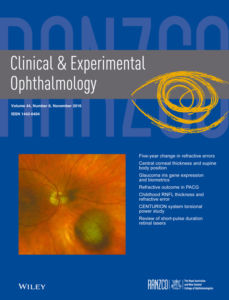Prevalence of dry eye syndrome in an adult population
Authors
Affiliations
- Noor Ophthalmology Research Center, Noor Eye Hospital, Tehran, Iran; Farabi Eye Hospital, Tehran University of Medical Sciences, Tehran, Iran.
Abstract
Background: To determine the prevalence of dry eye syndrome in the general 40- to 64-year-old population of Shahroud, Iran.
Design: Population-based cross-sectional study.
Participants: Through cluster sampling, 6311 people were selected and 5190 participated. Assessment of dry eye was done in a random subsample of 1008 people.
Methods: Subjective assessment for dry eye syndrome was performed using Ocular Surface Disease Index questionnaire. In addition, the following objective tests of dry eye syndrome were employed: Schirmer test, tear break-up time, and fluorescein and Rose Bengal staining using the Oxford grading scheme.
Main outcome measures: Those with an Ocular Surface Disease Index score ≥23 were considered symptomatic, and dry eye syndrome was defined as having symptoms and at least one positive objective sign.
Results: The prevalence of dry eye syndrome was 8.7% (95% confidence interval 6.9-10.6). Assessment of signs showed an abnormal Schirmer score in 17.8% (95% confidence interval 15.5-20.0), tear break-up time in 34.2% (95% confidence interval 29.5-38.8), corneal fluorescein staining (≥1) in 11.3% (95% confidence interval 8.5-14.1) and Rose Bengal staining (≥3 for cornea and/or conjunctiva) in 4.9% (95% confidence interval 3.4-6.5). According to the Ocular Surface Disease Index scores, 18.3% (95% confidence interval 15.9-20.6) had dry eye syndrome symptoms. The prevalence of dry eye syndrome was significantly higher in women (P = 0.010) and not significantly associated with age (P = 0.291). The objective dry eye syndrome signs significantly increased with age.
Conclusions: Based on the findings, the prevalence of dry eye syndrome in the studied population is in the mid-range. The prevalence is higher in women. Also, objective tests tend to turn abnormal at higher age. Pterygium is associated with dry eye syndrome and increased its symptoms.
Keywords: Iran; dry eye; population-based study; prevalence.

